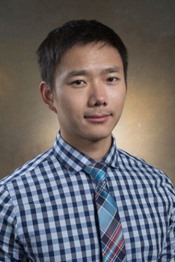Automatic Classification of Digital X-Ray Quality Control Images with a Modified GoogLeNet
Presentations
TU-D1000-IePD-F6-6 (Tuesday, 7/12/2022) 10:00 AM - 10:30 AM [Eastern Time (GMT-4)]
Exhibit Hall | Forum 6
Purpose: Our institution has implemented a quality control program in which flat field images (acquired without any object between X-ray tube and detector) and phantom images (RaySafe P-Fluoro Phantom) are acquired monthly on our digital X-ray (DX) equipment. For analysis purposes, the QC images need to be sorted into flat field images (FF) and phantom images (PH). While rule-based algorithms can certainly complete this task, designing such an algorithm is not trivial given the wide variation in equipment, exam setups and experiences of QC technologists. In this study, a convolutional neural network is trained to sort the QC images into FF and PH images as the first step towards achieving automated QC image analysis.
Methods: A total of 640 DX images were arbitrarily sorted into three different groups: training group (N=445, FF=182, PH=263), validation group (N=112, FF=46, PH=66) and testing group (N=83, FF=37, PH=46). Each image was manually labeled as either flat field (FF) or phantom (PH). A pre-trained GoogLeNet was modified to classify the DX QC images, implemented in Matlab 2021a with a single CPU (Intel i5-9500 @ 3.00GHz). Given the simplicity of the classification task, Max epoch number was set to 10, with batch size set to 64, resulting in a maximum of 60 iterations.
Results: The neural network training quickly converged after 4 iterations and achieved 100% classification accuracy in both the training group and validation group. This process took approximately 1 minute. The training was terminated manually after 16 iterations given the stable classification accuracy. The trained neural network was then deployed on the testing group (N=83) and achieved 100% classification accuracy as well.
Conclusion: Convolutional Neural Work is well-suited for the classification task of our DX QC images. We plan to further implement this tool to other QC tasks at our institution.
Keywords
Taxonomy
IM- X-Ray: Digital radiography (DR and CR)
Contact Email



